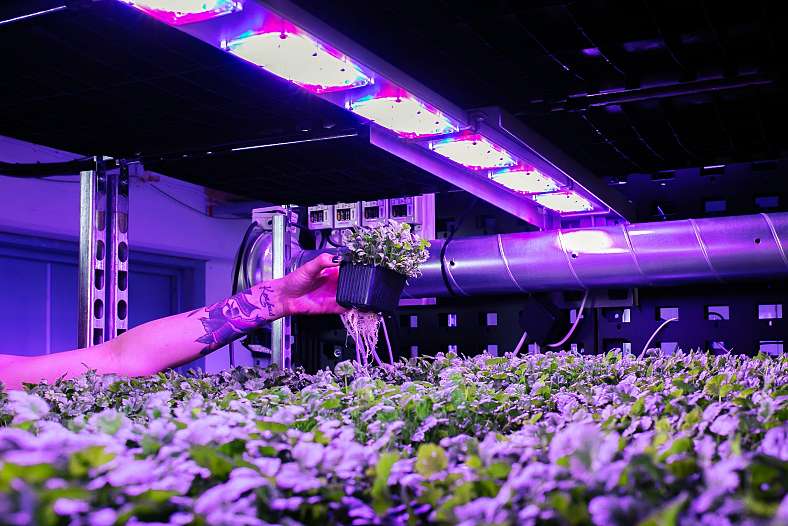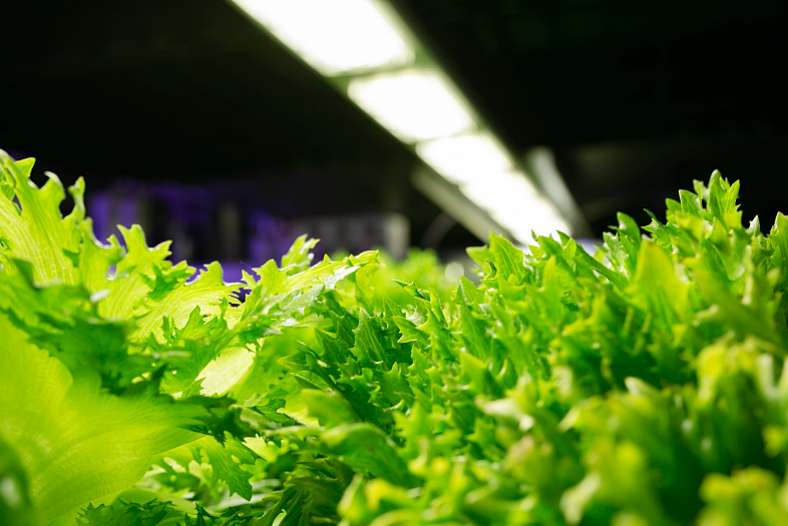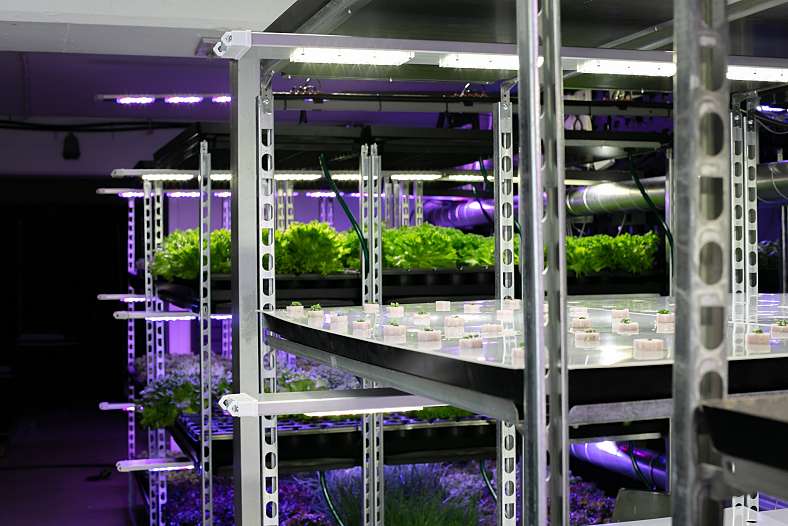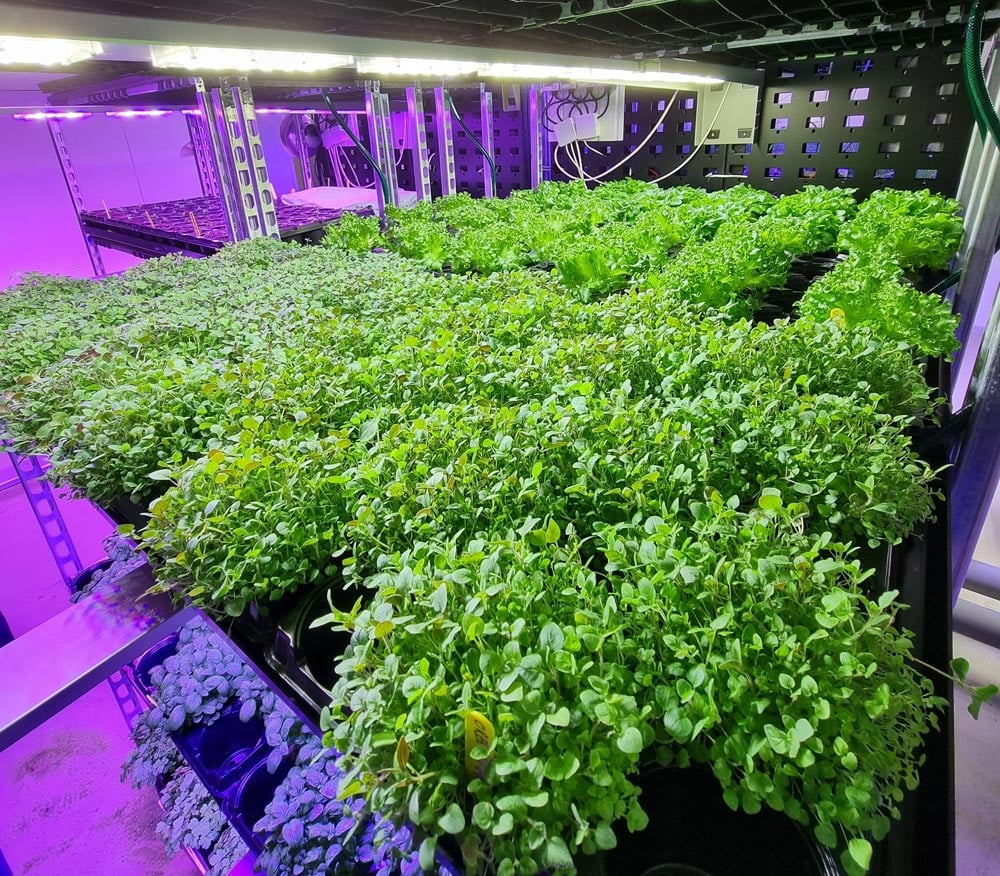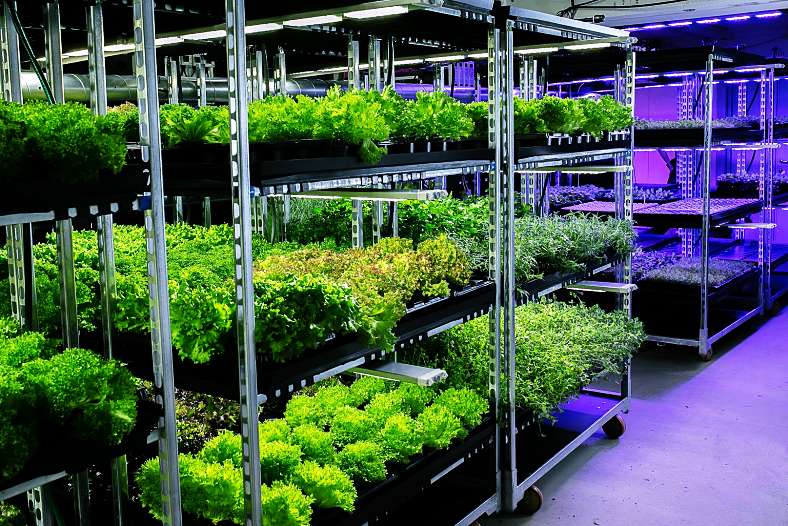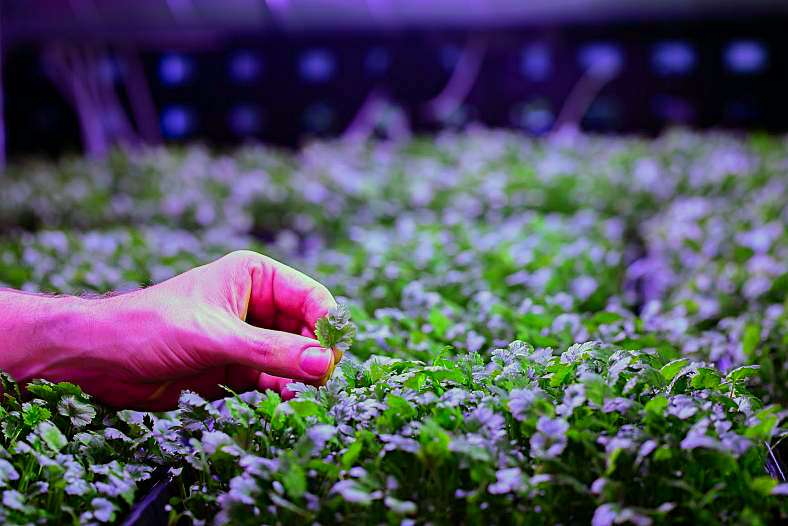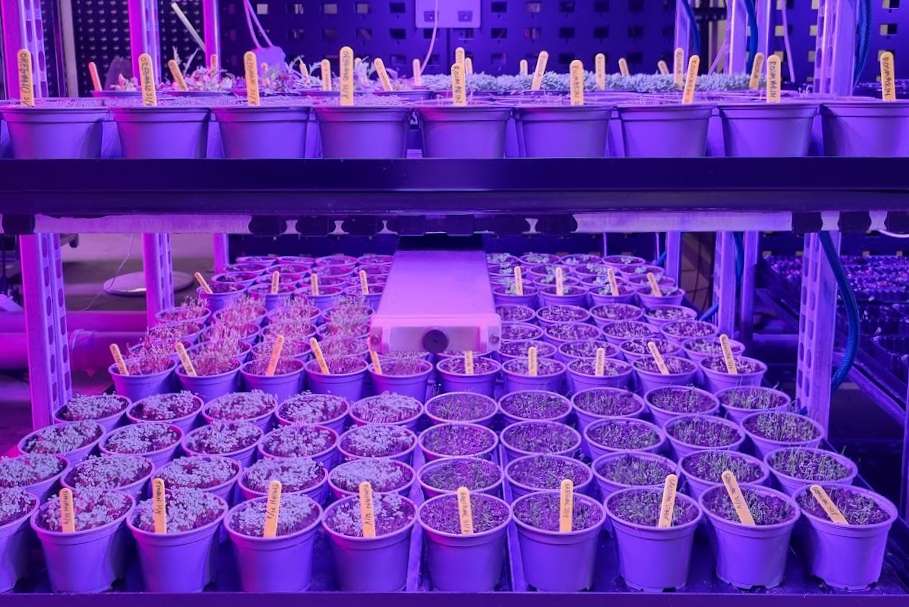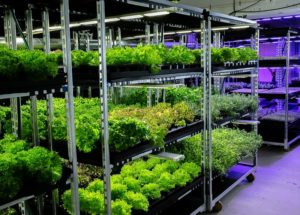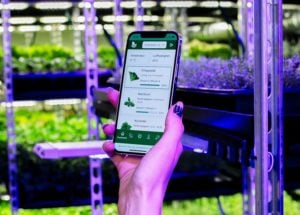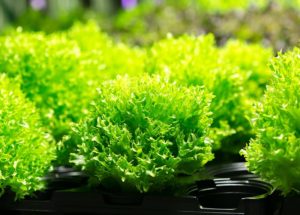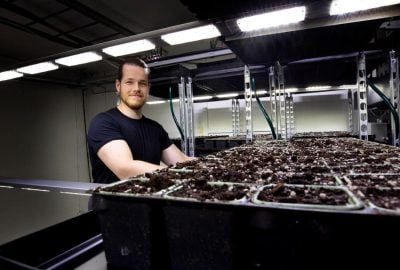Vertical farming is plant cultivation in vertically stacked layers. It can be performed anywhere, and the farms come in all sizes. However, serious industry contenders tend to go for large-scale production combined with controlled-environment agriculture (CEA).
Vertical farming comes in many forms. Stacked plant growth on high-rise rooftops is one way to go about it. Indoor vertical farms tend to be much more scientifically oriented, while plant factories use cutting-edge technology, including AI and robotics, to get the job done.
Find out more: Vertical farming research
Vertical farming has the potential for sustainable food production. It already combats many environmental issues, such as land degradation, water spillage, and transport emissions. The energy consumption is still a problem, but LED developers are on the case.
LED technology directly connects to vertical farming’s biggest challenges, but it also facilitates profitable sustainable plant growth. Therefore, it’s no surprise that any serious vertical farming business knows all about LED, but that’s a topic for another blog post.
Another blog post: Why is LED grow lights best for vertical farming?
How did vertical farming start?
To answer the question «what is vertical farming», we first need to look at its origins. Vertical farming as we know it today was invented by Professor Dickson Despommier and his students, sort of.
In 1999, Despommier challenged his students to find out how much food could be grown on New York City rooftops. As it turned out, rooftop farming could only hope to feed about 1000 people. Subsequently, Despommier came up with a new method: Indoor vertical farming.
Based on Despommier’s idea, his students proposed the design of a 30-story vertical farm that could feed 50.000 people. Their plan included plant growth by artificial lighting, advanced hydroponics, and aeroponics.
Despommier’s students’ agricultural skyscraper was never built, but their idea inspired farmers and researchers worldwide. Plant scientists and plant factories have since refined the concept, but Despommier and his students lit the vertical farming spark.
Vertical farming growing up
After Despommier introduced the idea, farmers and scientists worldwide started asking, «what is vertical farming, and how can we start». In 2009, Paignton Zoo Environmental Park in the UK launched a large project to research sustainable animal food production.
Another significant step in the history of vertical farming was the opening of Singapore’s Sky Greens Farms in 2012. It was the first commercial vertical farm and has since developed into a major corporation with over 100 plant factories.
Alongside the vertical farming industry, interest organizations have emerged to increase food security and ensure sustainable development. In 2013, the Association for Vertical Farming (AVF) was founded in Munich.
Between 2014 and 2020, vertical farming startup investments were about USD 1.8 billion, and the industry is still growing fast. Increased local food production and sustainable plant growth motivate many investors who aim to turn v-farming into big business.

Vertical agriculture vs. traditional agriculture
Naturally, there are significant differences between vertical and traditional agriculture. Before listing some of the most fundamental distinctions, let’s skip directly to the takeaway: Vertical farming complements traditional agriculture rather than threatens it!
Yes, vertical farming is homing in on certain areas of plant production, but it’s nowhere near overtaking traditional agriculture. We still need good old outdoor farming to sustain our way of life.
That said, we need to stop land degradation, which is why vertical farming offers a solution to one of our most significant environmental problems. V-farming doesn’t require land. It only requires buildings. For this reason, moving part of our food production indoors might actually save the planet.
Find out more: How vertical farming reduces environmental impact
On a more practical level, vertical and traditional farming differ a lot. And yes, we know that there are some exceptions, but generally speaking, these are the most significant contrasts between vertical and traditional farming:
| Vertical farming | Traditional farming |
| No land required | Large land areas required |
| Indoor plant growth | Outdoor/greenhouse plant growth |
| Artificial light (Total light control) | Sun (No light control) |
| Controlled environment/conditions | Natural environment/conditions |
| Flexible farming system | Unruly farming system |
| No pesticides/chemicals | Frequent use of pesticides/chemicals |
| Costly startup, but cheap production | Moderate cost of startup and production |
| Powered by electricity | Powered by fossil fuels |
In a nutshell, vertical farming startups are expensive. However, the highly controllable environment makes plant growth and profit generation safer, more wholesome, and less harmful to arable lands.
If you want to know more, we have written this in-depth article on the differences between vertical and traditional farming.
Why are more people asking «what is vertical farming» now?
It is no secret that we’re facing a food shortage problem when our global population reaches 9 billion before 2050. Continued expansion of traditional farming will be detrimental to the planet. Vertical farming offers a solution that gains traction by the minute.
A third of all arable land has already deteriorated due to human activities. Not only do we need to stop this trend, but we also need to make our land arable again. We do not know how to combat this challenge. So far, vertical farming is our best bet.
Space is the key. Vertical farming does more than circumvent traditional farming’s land requirements; it also radically increases plant growth capacity per square meter. Even better, though we’re talking tight quarters, various crops can get perfect conditions side by side.
In other words, you can micro-manage the climate of different crop sections on your vertical farm and keep the various conditions stable year-round. The potential of vertical farming improves alongside technological advances, and for every step forward, it gains more traction.
Vertical farming can be performed «anywhere»
Vertical farming is so space-conserving that large-scale plant production can start just as easily in urban as in rural areas. All you need is a suitable building. It can be anything from shipping containers or old barns to abandoned factories or regular office buildings.
Even though many facilities might be suitable, certain criterias are critical. The layout must be suited for complete climate control. Ideally, there should be fixtures or at least space for installing control systems for light, water, temperature, and ventilation.
Find out more: How to start vertical farming?
As you may have heard, vertical farming startup costs are high because of the equipment requirements. One way to get around this is to start small and expand production over time. Then, your initial investment gets reduced while you gain experience.
Avisomo’s vertical farming system is perfect for small startups and plant factories alike. Our system is module-based and constructed of CC trolleys, which are already an industry-standard in vegetable production. In other words, we aim to design flexible solutions for all.
Vertical agriculture grows bigger every day
Most plant factories that have made strides in the vertical farming industry started their journey with leafy greens. This is because leafy greens are always in demand, it grows fast, and plant optimization is relatively easy.
Plant factories grow all kinds of vegetables these days, from mushrooms and peas to tomatoes and strawberries. Some have achieved great success by germination or plant propagation, but leafy greens are still the safest bet for startups.
It might sound limiting, but plant scientists constantly work to widen the plant selection in vertical farming. Some of the biggest vertical farming companies in the world have even vowed to make a wide range of new vegetables standardized for production by 2022.
An insider’s tip from us in Avisomo is to start with leafy greens and expand your plant selection to other niches later. This is the safest way to secure a quick return on your investment. After that, you can experiment with other plants to increase your revenue.
Takeaway: So, what is vertical farming really?
Vertical farming is a plant growth method tailor-made for local food production. It moves plant cultivation indoors and applies cutting-edge methods/technology to make it more wholesome and sustainable than ever before.
Vertical farming is still growing up. It has lots of room for improvement, which is why it is fascinating. Industry giants are already making huge profits off vertical farming. Just imagine what we can achieve once it reaches its full potential.
If you still have questions about what vertical farming is or how to get started, don’t hesitate to contact us at Avisomo.
Resources
Evergreen Farm: What is vertical farming
ICL: What is vertical farming, and what are the advantages?
Pacific Standard: Going up? Vertical farming in high-rises raises hopes
Tech Target: What is vertical farming? Definition from Whatis.com
Urban Green Farms: What is vertical farming?


